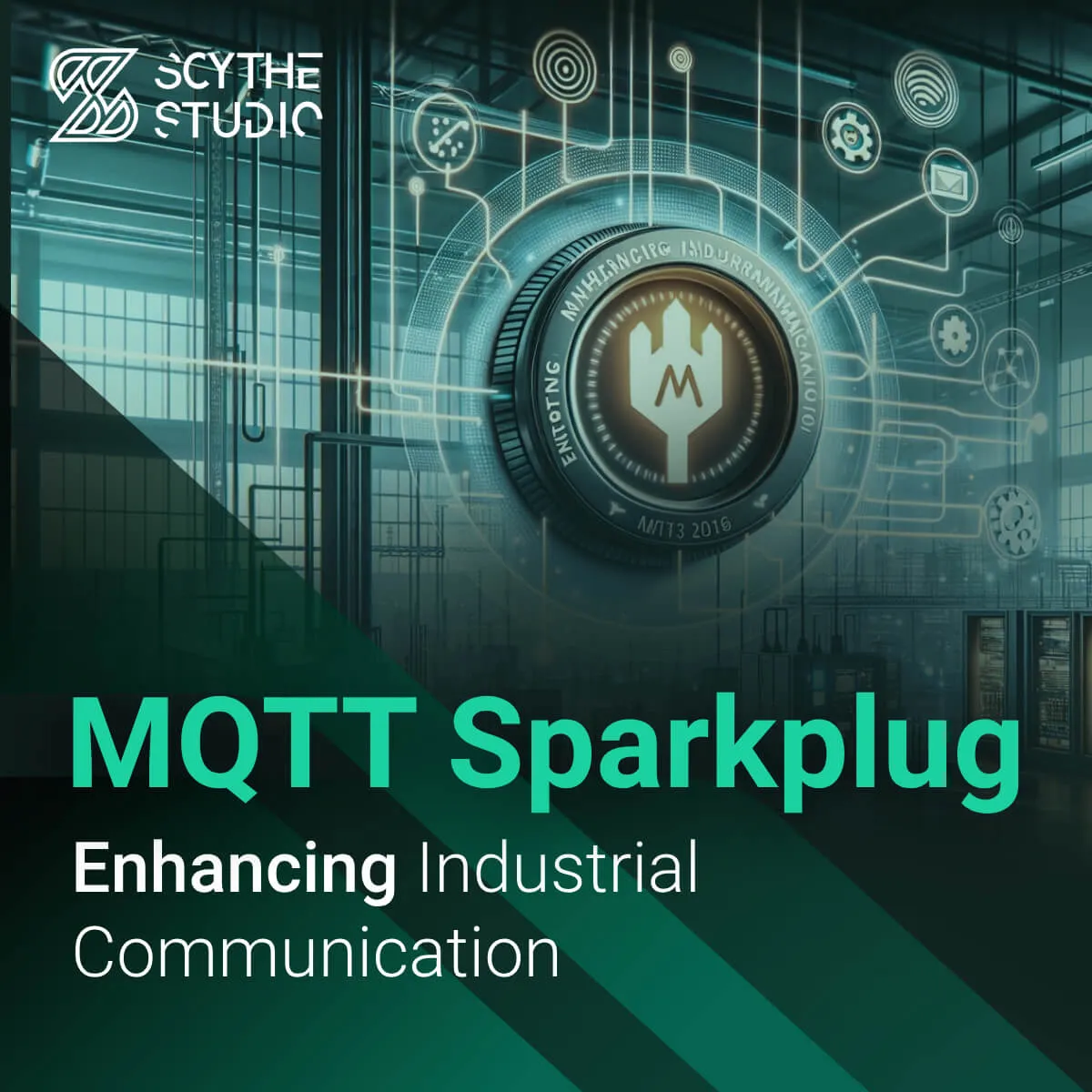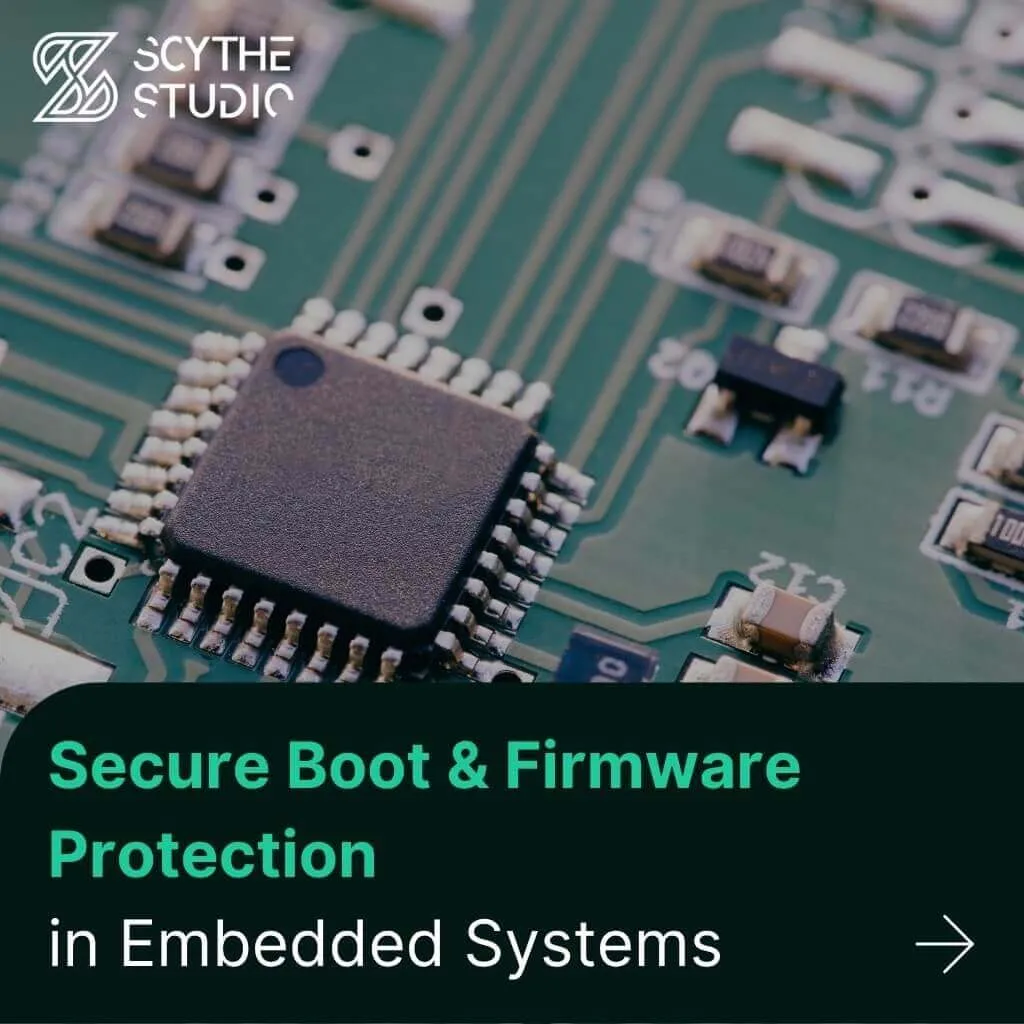
Cybersecurity for Embedded Systems
From medical devices and smart vehicles to industrial controllers and consumer electronics, embedded systems are everywhere—and increasingly connected. But with […]
Join us at Qt C++ Warsaw Meetup - 21.08.2025
Sign up for free!
The Industrial Internet of Things (IIoT) is revolutionizing how industries operate by enabling smarter, more efficient manufacturing and production processes. By connecting a multitude of devices, sensors, and systems, IIoT facilitates the collection, analysis, and utilization of vast amounts of data sources to optimize performance, predict maintenance needs, and enhance overall productivity.
Central to the success of IIoT is the use of robust and reliable communication protocols. These protocols ensure that data is transmitted accurately and efficiently between devices and systems, enabling seamless integration and interoperability. Without effective communication protocols, the potential of IIoT to transform industrial operations would be severely limited.
One such protocol that has been gaining significant traction in the IIoT landscape is Sparkplug. Designed to address the specific needs and challenges of industrial applications, Sparkplug provides a standardized way of ensuring that data from sensors and edge devices is transmitted reliably and efficiently to central systems like SCADA (Supervisory Control and Data Acquisition) and MES (Manufacturing Execution Systems).
SparkplugB stands out for its ability to enhance the reliability and scalability. It introduces mechanisms that maintain data integrity, even in the face of network disruptions, and ensure that all devices and applications can communicate effectively. By leveraging the MQTT (Message Queuing Telemetry Transport) protocol, Sparkplug offers a lightweight and efficient way to handle the vast amount of data generated by industrial processes.
At Scythe Studio, we specialize in leveraging cutting-edge technologies to enhance industrial automation. In this blog post, we will explore what MQTT Sparkplug B is, why it is essential for modern IIoT applications, and how you can implement Sparkplug to drive greater efficiency and reliability in industrial operations.

Traditional industrial protocols such as Modbus, OPC (OLE for Process Control), and Profibus, have been the backbone of industrial automation for decades. However, these protocols face several challenges in the context of the modern IIoT landscape:
Limited Interoperability: Many traditional protocols are proprietary and designed for specific equipment or manufacturers. This lack of standardization makes it difficult to integrate devices from different vendors, leading to compatibility issues and increased complexity in system integration.
Scalability Issues: As the number of connected devices in an IIoT system grows, traditional protocols often struggle to handle the increased data traffic. They were not designed to support the massive scale and data volume characteristic of modern IIoT deployments.
Reliability Concerns: Industrial environments can be harsh, with frequent disruptions in network connectivity. Traditional protocols may not have robust mechanisms to ensure data integrity and reliable communication in the face of these disruptions, leading to potential data loss and system inefficiencies.
Sparkplug is an open source software specification. Developed by the Eclipse Foundation specifically to overcome these limitations and to provide a robust communication protocol tailored to the needs of IIoT. Here’s how Sparkplug addresses the key challenges of interoperability, scalability, and reliability:

Sparkplug B is built on the MQTT protocol, which is a lightweight, publish-subscribe network protocol that transports messages between devices. MQTT is widely adopted in the IoT world for its simplicity and efficiency. Sparkplug B specification enhances MQTT by adding a standardized payload format and state management features, ensuring that devices from different manufacturers can communicate seamlessly. This standardization facilitates interoperability, allowing diverse devices and systems to seamlessly integrate data and reduce the complexity and cost of system integration.
One of the standout features of Sparkplug architecture is its ability to scale efficiently with the growth of IIoT systems. MQTT, the underlying protocol of Sparkplug is designed for minimal bandwidth usage and efficient message handling, making it ideal for large-scale deployments. Sparkplug further improves scalability by using a hierarchical topic namespace, enabling efficient organization and management of data from thousands of devices. This ensures that as the number of connected devices increases, the system can handle the data load without performance degradation.
In industrial environments, maintaining reliable communication is critical. Sparkplug addresses reliability in several ways:
State Management: Sparkplug introduces the concept of a “birth certificate” and “death certificate” for devices. When a device comes online, it sends a birth certificate message, informing the system of its presence and current state. If a device goes offline, it sends a death certificate to the server. This ensures that the system always has an accurate view of which devices are active and their states.
Data Integrity: Sparkplug ensures that data is not lost during network disruptions. It supports persistent session states, meaning that if a connection is temporarily lost, the system can resume communication without losing critical data.
Efficient Data Transmission: By using a publish-subscribe model, Sparkplug ensures that information is transmitted only when there are updates, using less bandwidth and ensuring timely delivery of important information.
In conclusion, Sparkplug offers significant advancements over traditional communication protocols, making it a vital component for modern IIoT systems. Its ability to ensure interoperability, scalability, and reliability addresses the core challenges faced by industrial communication, paving the way for more efficient and resilient IIoT deployments.
Sparkplug operates on top of the MQTT (Message Queuing Telemetry Transport) protocol, providing a framework specifically designed for industrial applications. The architecture is designed to ensure reliable, scalable, and efficient communication across various components of an IIoT system. At its core, Sparkplug specification enhances MQTT by defining a standard payload format, topic namespace and structure. The MQTT state management is clearly defined to ensure that all devices and system components in an IIoT deployment can communicate seamlessly. The original Sparkplug A payload encoding scheme was never widely adopted, instead a newer version called SparkplugB gained popularity.
The primary application of Sparkplug is to provide a consistent and interoperable method for sending data within industrial environments. This is achieved by standardizing the payload and topic structure, facilitating integration between diverse systems and devices. The payload is encoded using Google’s Protocol Buffers which is less popular than the JSON format. Many data types are defined to support
The key components of a Sparkplug system include edge nodes, the MQTT broker, and SCADA (Supervisory Control and Data Acquisition) systems. Each plays a critical role in ensuring the effective transmission and utilization of data within the IIoT ecosystem.
 Figure 1 – MQTT SCADA Infrastructure
Figure 1 – MQTT SCADA Infrastructure
Edge Nodes
Edge nodes are devices located at the periphery of the network that collect data from sensors, actuators, and other industrial equipment. These nodes preprocess and publish data to the MQTT broker using the Sparkplug protocol. Nodes are responsible for monitoring the state of the devices they manage and ensuring that any changes or updates are communicated promptly.
MQTT Brokers
The MQTT broker acts as a central hub for message transmission. It receives messages from other system components working as MQTT clients and routes them to the appropriate subscribers, such as SCADA systems. The broker ensures efficient data distribution, enabling real-time monitoring and control of industrial processes. It supports persistent sessions and can store messages for disconnected clients, ensuring that no critical data is lost during network disruptions.
SCADA Systems
SCADA systems are critical for the monitoring and control of industrial processes. In a Sparkplug-enabled architecture, SCADA systems subscribe to specific topics on the MQTT broker to receive updates from edge nodes. This allows SCADA systems to maintain an accurate and real-time view of the state of all connected devices, facilitating effective decision-making and process management.
MQTT Sparkplug specifications A and B define a standardized message structure that includes three primary messages: birth certificates, data messages, and death certificates. These messages ensure that the state of the system is consistently maintained and that data integrity is preserved.
Birth Certificate
A message is sent by an edge node when it comes online or restarts. This message type includes information about the node’s identity (ie. device id and group id), its current state, and the state of all connected devices. The birth certificate ensures that the MQTT broker and all subscribers are aware of the node’s presence and can begin or resume communication. It serves as an initialization signal, allowing the system to synchronize and update its records and makes new data sources immediately discoverable. This allows the nodes to become a single source of truth.
Data Message
Data messages are the primary means of transmitting sensor readings, status updates, and other real-time information from edge nodes to the MQTT broker and subscribers. These messages include the actual data payload, along with metadata such as timestamps and quality indicators. Sparkplug data messages are published to specific topics, allowing subscribers to filter and receive only the relevant information.
Death Certificate
A death certificate message is sent to the server by an edge node before it goes offline or shuts down. This message informs the MQTT broker and subscribers that the node is no longer available, allowing the system to update its records and take appropriate actions. If a node goes offline unexpectedly, the broker can detect the absence of messages and infer the node’s status, but the explicit death certificate ensures a clean and accurate state transition.
By defining these message types and structures, MQTT Sparkplug ensures that the state of all devices and systems is consistently maintained, even in the face of network disruptions or changes in the system configuration. This robust framework enables efficient and reliable communication, making Sparkplug an ideal choice for modern IIoT deployments.
Reduced Latency Sparkplug leverages the efficiency of the MQTT protocol, which is known for its low-latency communication capabilities. By using a publish-subscribe model, Sparkplug ensures that data is transmitted only when there are updates, minimizing unnecessary traffic and ensuring that critical information is delivered in real time. This is especially important in industrial settings where timely data is crucial for decision-making and process control.
Improved Data Integrity Data integrity is a critical concern in IIoT applications, where inaccurate or missing data can lead to significant operational issues. Sparkplug defines robust state management features. The use of birth and death certificates ensures that the system always has an accurate view of the state of all connected devices. Additionally, the persistent session capability of the MQTT broker ensures that data is not lost during temporary network disruptions, maintaining a consistent and reliable data stream.
Enhanced Security Security is a major concern in IIoT deployments, where data breaches or unauthorized access can have severe consequences. Sparkplug, built on MQTT, benefits from the protocol’s security features, including TLS/SSL encryption for data transmission and support for various authentication mechanisms. These security measures help protect the integrity and confidentiality of the data being transmitted, reducing the risk of cyber threats and unauthorized access.
Interoperability One of the standout features of Sparkplug is its ability to facilitate interoperability among devices and systems from different manufacturers. By defining a standardized payload format and state management protocol, MQTT Sparkplug specificationensures that diverse devices can communicate seamlessly. This reduces the complexity and cost of integrating various components into a unified IIoT system, enabling more flexible and scalable deployments.
Scalability Sparkplug is designed to handle the large scale typical of modern IIoT systems. Its hierarchical MQTT topic namespace allows for efficient organization and management of data from thousands of devices. This scalability ensures that as the number of connected devices grows, the system can continue to operate effectively without performance degradation. The lightweight nature of MQTT infrastructure further enhances this scalability, making it suitable for large-scale industrial applications.

Sparkplug architecture is being increasingly adopted across various industries, demonstrating its versatility and effectiveness in enhancing IIoT deployments. Below are some real-world examples and applications where Sparkplug has made a significant impact:
Manufacturing
In smart manufacturing, efficiency and uptime are critical. Sparkplug facilitates seamless communication between machines, sensors, and central systems, enabling real-time monitoring and control. For instance, a factory utilizing Sparkplug can have its CNC machines, conveyors, and quality control systems integrated into a single, coherent network. This integration allows for immediate detection and correction of anomalies, predictive maintenance scheduling, and optimized production workflows, ultimately leading to reduced downtime and increased productivity.
Energy
The energy industry, including utilities and renewable energy sources like wind and solar, benefits greatly from Sparkplug’s robust communication framework. In wind farms, for example, Sparkplug can connect various sensors and control systems to a central SCADA system, allowing operators to monitor turbine performance in real-time. This connectivity ensures that any deviations or issues are promptly addressed, improving efficiency and reducing maintenance costs. Similarly, in solar power plants, Sparkplug enables better monitoring and optimization of solar panel performance, enhancing overall energy output.
Transportation
In the transportation industry, particularly in fleet management and logistics, MQTT Sparkplug helps in tracking and managing assets efficiently. For example, a logistics company can use Sparkplug to connect GPS devices, temperature sensors in refrigerated trucks, and fuel monitoring systems to a central control unit. This connectivity provides comprehensive insights into vehicle locations, operating conditions, and fuel usage, enabling better route planning, maintenance scheduling, and overall operational efficiency.
Building Automation
Building automation systems (BAS) can implement MQTT Sparkplug to integrate various subsystems such as HVAC (Heating, Ventilation, and Air Conditioning), lighting, security, and energy management. By using MQTT Sparkplug, building managers can achieve a unified view of the entire building’s operations, allowing for automated adjustments based on real-time data. For instance, HVAC systems can be adjusted based on occupancy and weather conditions, lighting can be optimized for energy savings, and security systems can be enhanced with real-time alerts and monitoring.
Agriculture
In precision agriculture, Sparkplug B plays a crucial role in connecting various agricultural devices and systems. Sensors monitoring soil moisture, weather conditions, and crop health can communicate with irrigation systems and tractors, ensuring that water and fertilizers are applied precisely where needed. This not only enhances crop yield but also optimizes resource usage, contributing to more sustainable farming practices.
In summary, Sparkplug’s ability to provide reliable, scalable, and efficient communication makes it an invaluable tool across a variety of industries. Its implementation leads to significant benefits such as reduced downtime, improved efficiency, enhanced monitoring, and better decision-making, demonstrating its pivotal role in the advancement of IIoT.
As the Industrial Internet of Things (IIoT) continues to evolve, Sparkplug is poised to play an increasingly vital role in the digital transformation of the industrial landscape. Emerging trends and technologies are driving the need for more advanced communication protocols, and Sparkplug is well-positioned to meet these demands. Key trends shaping the future of Sparkplug include:
Edge Computing: With the rise of edge computing, where data processing occurs closer to the source of data generation, Sparkplug’s lightweight and efficient communication framework will become even more critical. Edge devices need to communicate reliably and efficiently with central systems, making Sparkplug an ideal solution.
Artificial Intelligence and Machine Learning: The integration of AI and machine learning in industrial processes requires robust data collection and communication frameworks. Sparkplug ensures that high-quality, real-time data is available for AI algorithms, enhancing predictive maintenance, process optimization, and anomaly detection.
5G Connectivity: The rollout of 5G networks promises higher bandwidth, lower latency, and more reliable connections. Sparkplug, combined with 5G, will enable more sophisticated and large-scale IIoT applications, facilitating real-time data exchange and control in highly dynamic environments.
The adoption of MQTT Sparkplug B is expected to grow rapidly as more industries recognize the benefits of this robust communication solution. The increasing complexity of IIoT systems and the demand for real-time, reliable data transmission will drive wider acceptance of Sparkplug. Its ability to ensure interoperability, scalability, and reliability makes it an indispensable tool for modern industrial operations.
As the adoption of Sparkplug continues to expand, our company is dedicated to helping customers navigate this transition smoothly. We offer comprehensive support and services to ensure successful implementation and integration of MQTT Sparkplug into your IIoT systems. Our expertise and experience in the field enable us to provide tailored solutions that meet the unique needs of your organization.
Let's face it? It is a challenge to get top Qt QML developers on board. Help yourself and start the collaboration with Scythe Studio - real experts in Qt C++ framework.
Discover our capabilities
From medical devices and smart vehicles to industrial controllers and consumer electronics, embedded systems are everywhere—and increasingly connected. But with […]

Hey, welcome back to another blog post. Today we’re going to talk about the new Qt WebAssembly. This post will […]

Users of embedded devices – from industrial controllers to consumer electronics – are often unaware of hidden vulnerabilities that threaten […]